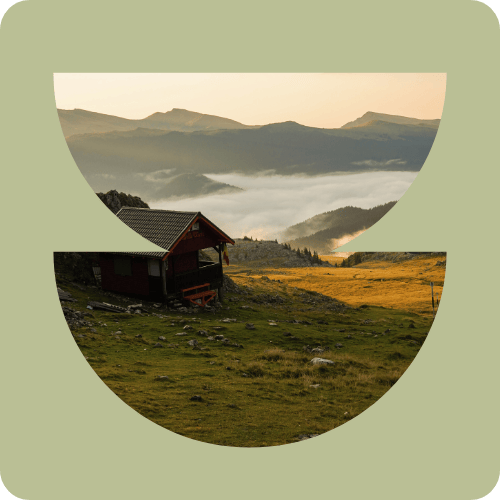Shake Up The Establishment’s Feedback on Proposed interim changes to the Endangered Species Act, 2007 and a proposal for the Species Conservation Act, 2025
Author
Anna Huschka
My name is Anna (she/her), and I am a white settler located on the lands of the Williams Treaty First Nations: the Alderville First Nations, Beausoleil First Nation, Chippewas of Georgina Island, Chippewas of Rama, Curve Lake First Nation, Hiawatha First Nation, and Mississaugas of Scugog Island. I do not intend to speak on behalf of any communities I am not a part of. I hope to leverage my position of privilege as a cisgender white woman to amplify the efforts and voices of those doing so much work towards climate justice in their communities across the country. I want to be a part of challenging the Euro-settler-centric and Western values that currently shape climate policies, to counteract colonial and systemic barriers, ensuring that the concerns, exposures, and knowledges of diverse communities are adequately incorporated into environmental policies and projects. As Director of Policy at Shake Up The Establishment I hope to help support climate work at all scales and showcase the community-based efforts that have developed out of necessity of addressing the issues of climate justice. As a biology major and politics minor, my passion for environmental politics developed from a sense of urgency and anger about the lack of action by decision-makers to adequately address the climate crisis. I aim to hold decision-makers accountable to climate commitments as well as diversify what is currently Canada’s political climate by identifying gaps in policies and projects by responding to calls for public feedback.
Editor
Mei-Ling Patterson

About the Endangered Species Act 2007
The Endangered Species Act, 2007 currently mandates:
- The identification of species and habitats at risk (1)
- The development and implementation of strategies to protect them (1)
- The regulation and permitting of activities that may pose threats to at-risk species and habitats (1)
Changes to the Endangered Species Act, 2007 were proposed within provincial Bill 5, Protect Ontario by Unleashing our Economy Act, 2025 in April 2025 (2). For more information on the proposed changes to the Endangered Species Act, 2007 and the Species Conservation Act, 2025:
The provincial government of so-called Ontario collected feedback on various aspects of the Bill over the course of April and May 2025. We submitted our feedback on the changes to legislation that is supposed to protect and conserve at-risk species and habitats.
Our Feedback
This feedback submission is on behalf of Shake Up The Establishment (SUTE), a youth-led national registered non profit organization (#1190975-4) dedicated to addressing climate and social justice across what is currently Canada.
We have the following recommendations to the Ontario provincial government regarding the proposed changes to the Endangered Species Act, 2007, and the proposal for the Species Conservation Act, 2025, which will be expanded on below:
- These Acts must have mandated accountability and reporting measures to ensure that the government is effectively protecting and conserving at-risk species and habitats.
- There must be clearly mandated regulations to the government on the protection of species and habitats at risk.
- It is vital that there is still a body involved in implementing the Acts whose priority is “positive outcomes for certain designated species”.
- Financial punishments must go back into supporting protection and conservation of at-risk species and habitats, whether through the Fund or a different regulatory body.
- There should be a public database or documentation that the public can use to hold violators accountable.
- Permitting, registering, approval, and listing processes must require in-depth research and analysis, and cannot allow for political and economic concerns to override harms to species and habitats at risk.
- The government must ensure appropriate and in-depth consultations with Indigenous and local communities, scientists, and other stakeholders and experts before allowing for projects and activities to proceed.
- There needs to be stronger accountability measures as a part of the registration process, including having a body responsible for ensuring that registered activities are “following the rules in regulation” when starting operations.
- The definition of habitat must be kept more broad to ensure the protection and conservation of resources and ecosystems to allow for species to not only survive but thrive.
- Resource protection must be integrated into what is considered a habitat within these Acts.
- The government must invest in conservation efforts that are led by Indigenous and local communities, and ensure that they are consistently consulting with the public.
- There should be a funding stream dedicated to Indigenous-led programming, including the development of Indigenous Protected and Conserved Areas.
- It is vital that Indigenous communities be able to lead decision-making and activities across the province related to the protection and conservation of at-risk species and habitats.
- The production of all rules and regulations for registered activities must be consulted upon by Indigenous and local communities and other experts and stakeholders to ensure that economic needs are not prioritized over the wellbeing of species and habitats.
- The government must maintain spaces for community members to be in direct contact with the government to ensure that there is accountability on the effectiveness of protection and conservation efforts.
- The government must ensure they are consulting Indigenous communities in accordance with the principles of free, prior, and informed consent as laid out in the United Nations Declaration on the Rights of Indigenous Peoples.
- The government should be having Indigenous communities lead decision-making processes throughout implementation of the Acts
- The government must be transparent about how they are obtaining input and advice and who from, so that residents can hold them accountable to the decisions being made.
These Acts must have mandated accountability and reporting measures to ensure that the government is effectively protecting and conserving at-risk species and habitats.
Removing the required development of protection and conservation documents like recovery strategies and management plans is incredibly irresponsible. Without them, the government will have no mandated obligation to actually implement efforts that protect and conserve species at risk. This raises concerns that we will see the government continuously prioritizing economic benefits of development over any harms they may have on at-risk habitats and species. Given the other changes being made to the Act to create space for the consideration of economic impacts of projects and activities, maintaining these documents is a necessity. There must be clearly mandated regulations to the government on the protection of species and habitats at risk. Without the production of this essential documentation, residents and communities will be impeded in their ability to hold the government accountable to conservation targets. It will also be less clear how effective the government is at protection and conservation.
There needs to be clarification regarding whether the responsibilities of the Agency will be adopted by the Minister or another regulatory body. It is vital that there is still a body involved in implementing the Acts whose priority is “positive outcomes for certain designated species”.
Recognizing that violators of the Act can still be punished by a fine, there needs to be more transparency on where this money will be going and how it will be spent. This is to ensure that these financial punishments go back into supporting the protection and conservation of at-risk species and habitats, whether through the Fund or a different regulatory body. Additionally, with the wind down of the Fund, there must be transparency regarding how that money is being spent to ensure it is being “spent on activities that are in alignment with species protection and conservation goals”.
The accountability aspects of the Acts are focused on “holding the regulated community accountable”. However, there is a need for transparent accountability measures for residents to hold the government accountable as well. Beyond the government holding violators accountable, there should be a public database or documentation that the public can use to hold these violators accountable as well. These tools would also give the public the opportunity to engage in ethical decision-making based on who is violating Acts and if they’re actually making the effort to mitigate the violations.
Permitting, registering, approval, and listing processes must require in-depth research and analysis, and cannot allow for political and economic concerns to override harms to species and habitats at risk.
The permitting processes within the present iteration of the Endangered Species Act are intentionally slow. The government must ensure appropriate and in-depth consultations with Indigenous and local communities, scientists, and other stakeholders and experts before allowing for projects and activities to proceed. Rushing through the permit approval process may result in avoidable, irreversible harms to species and habitats at risk.
The registration-first approach is incredibly problematic. Allowing projects and activities to immediately proceed after registering, without any form of review or approval by the Ministry could allow for irreparable environmental damages to occur. There needs to be stronger accountability measures as a part of the registration process, including having a body responsible for ensuring that registered activities are “following the rules in regulation” when starting operations. We cannot allow for activities to simply operate on an honours system, or else species and habitats at risk may be forced to pay the price.
Allowing the government discretionary powers to override COSSARO decision-making undermines the efficacy of the Committee and its members who are selected because of their expertise in Indigenous, local, and Western science knowledge systems. The Committee members are well-equipped to determine the status of species in the province without interference from the government. COSSARO is intentionally independent to ensure that decision-making is not influenced by political agendas and priorities. This amendment to give the government the ability to adjust COSSARO’s lists will allow for the risk status of species and habitats to be intentionally changed to allow for certain projects to go through.
Restriction of what is considered a habitat in these Acts removes the space for nuance to ensure that the essential habitats, species, and resources are being protected from adverse harms as a result of projects and development across the province. Removal of these considerations for the sake of increasing the speed at which a permit can be given and a project can proceed may cause immeasurable harm to ecosystems and food webs which may not be immediately noticeable until it is too late to address them. There needs to be clarification on what will be considered the “area immediately surrounding a dwelling place”. Focusing the definition of habitats on areas that species use for “breeding, rearing, staging, wintering, or hibernating” disregards the essential interactions that species have with the broader environment around them to find food and other resources, and migrating habits. Nature does not exist in the confines of tight spaces of dwelling, but in big and broad interactions. The definition of habitat must be kept more broad to ensure the protection and conservation of resources and ecosystems to allow for species to not only survive but thrive.
Limiting the habitat definition for plant species to the “critical root zone” does not protect enough space for certain plant species. Root systems can expand well beyond this zone in order to obtain essential nutrients and water from within the surrounding soil (3). Removal or destruction of these roots and the essential resources they are obtaining can ultimately result in the death of at-risk plants, thus resource protection must be integrated into what is considered a habitat within these Acts (3).
Opening up of the Purpose of the Act to allow for the government to “[take] into account social and economic considerations, including the need for sustainable economic growth in Ontario” completely undermines the effectiveness and authority of these Acts. This sets a dangerous precedent that economic considerations will be the most prioritized/highest valued, and is incredibly indicative of what kind of decision-making will actually be resulting from these Acts.
The government must invest in conservation efforts that are led by Indigenous and local communities, and ensure that they are consistently consulting with the public.
We have concerns about how the Species Conservation Program will be utilized to support conservation programming across the province. There needs to be more clarity, developed in collaboration with Indigenous, community, and Western science experts, about how decisions will be made for what programs get funding, who will be making these decisions, and the accountability mechanisms to ensure that funded projects are actually successful in protecting and conserving at-risk species and habitats. Specifically there should be a funding stream dedicated to Indigenous-led programming, including the development of Indigenous Protected and Conserved Areas. Colonial conservation practices, like the development of provincial parks, have forced Indigenous communities off of their land and perpetuated harms against their communities (4). It is vital that Indigenous communities be able to lead decision-making and activities across the province related to the protection and conservation of at-risk species and habitats.
There is also a need for more clarity on what the rules in regulation of registered activities will actually be, who will be involved in the development of these rules through consulting and when, because “as necessary” is incredibly unclear and can result in accountability issues. The production of all rules and regulations for registered activities must be consulted upon by Indigenous and local communities and other experts and stakeholders to ensure that economic needs are not prioritized over the wellbeing of species and habitats.
Termination of the Species at Risk Program Advisory Committee removes an important opportunity and space for the essential consultation and collaboration with communities, experts, and stakeholders when implementing activities. The government must maintain spaces for community members to be in direct contact with the government to ensure that there is accountability on the effectiveness of protection and conservation efforts. The government must provide more clarity on how they will seek advice going forward. Through other amendments to these Acts, the government is already undermining the advising and decision-making power of COSSARO, which causes concern of who the government will be seeking advice from and how they will be implementing it. The government also has the Duty to Consult with Indigenous communities, and must ensure they are doing so in accordance with the principles of free, prior, and informed consent as laid out in the United Nations Declaration on the Rights of Indigenous Peoples (5,6). Indigenous communities should be able to lead decision-making processes throughout implementation of the Acts. The government must be transparent regarding how they are obtaining input and advice and who from, so that residents can hold them accountable to the decisions being made.
References
- Ramsay, D. Bill 184, Endangered Species Act, 2007 [Internet]. Legislative Assembly of Ontario; 2007 [cited 2025 May 18]. Available from: https://www.ola.org/en/legislative-business/bills/parliament-38/session-2/bill-184
- Lecce, S. Bill 5, Protect Ontario by Unleashing our Economy Act, 2025 [Internet]. Legislative Assembly of Ontario; 2025 [cited 2025 May 7]. Available from: https://www.ola.org/en/legislative-business/bills/parliament-44/session-1/bill-5
- UC Berkeley Forest Pathology and Mycology Lab. What is the Critical Root Zone around a tree? [Internet]. UC Berkeley Forest Pathology and Mycology Lab; [cited 2025 May 17]. Available from: https://nature.berkeley.edu/matteolab/?sp_faq=what-is-the-critical-root-zone-around-a-tree#:~:text=This%20full%20root%20zone%20may,also%20significantly%20affect%20the%20tree.
- The Indigenous Circle of Experts. We Rise Together: The Indigenous Circle of Experts’ Report and Recommendation [Internet]. The Indigenous Circle of Experts; 2018 Mar 22 [cited 2025 May 16]. Available from: https://www.icce-caec.ca/wp-content/uploads/2022/07/PA234-ICE_Report_2018_Mar_22_web.pdf
- Ministry of Indigenous Affairs and First Nations Economic Reconciliation. Duty to Consult with Aboriginal peoples in Ontario [Internet]. Government of Ontario; [modified 2024 Mar 20; cited 2025 May 16]. Available from: https://www.ontario.ca/page/duty-consult-aboriginal-peoples-ontario
- United Nations. United Nations Declaration on the Rights of Indigenous Peoples [Internet]. United Nations; 2007 Sep 13 [cited 2025 May 17]. Available from: https://social.desa.un.org/sites/default/files/migrated/19/2018/11/UNDRIP_E_web.pdf



